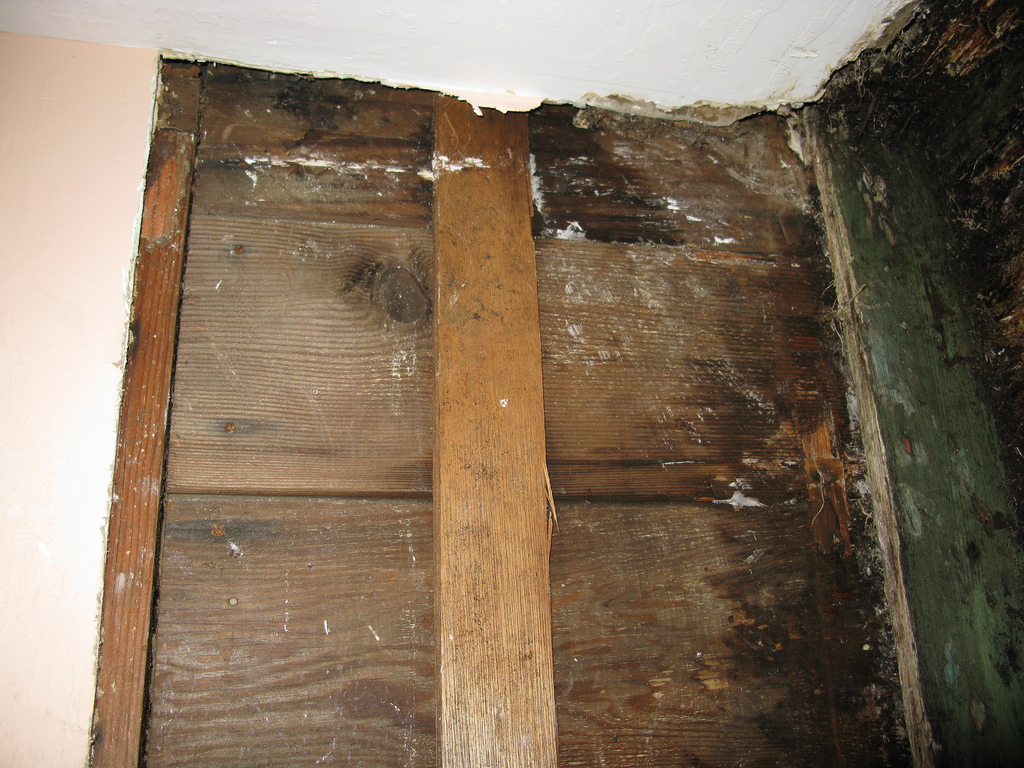Environmental mold poisoning is more common than most people think, though it is not understood or even acknowledged to exist by most doctors, and certainly not by the drug companies. Landlords would rather not believe it exists. In most cases, mold infestations and poisonings are not covered by any type of insurance. Very often, when mold is the cause of chronic illness, it is never discovered. People suffering from mold toxicity are almost always on their own as they try to discover the cause of their illness, correct the source of the mold, eliminate all the spores from their space, and regain their health and function. Without help, information and support, this can truly be a mammoth task. Without a clear mind and strong body, completing the necessary steps to complete restoration and recovery is very difficult. We need to have a correct understanding of the problem so we can apply the solution.
Indoor Mold
The rule of thumb is that if a mold grows on wood or paper or natural fibers (cellulose) as its substrate, it is toxic to humans by exposure. In nature, these molds are present in rotting leaves and other environments, but because of the vast volume of air in outdoor spaces, the concentrations reached by these mold spores are usually negligible and don’t cause harm. Indoors, however, the presence of a fungus that has a cellulose substrate (food base) results in much higher levels of toxic spores in the air. Worse yet, the released spores are easily trapped and collected in places that are difficult or impossible to completely clean such as carpets, mattresses, upholstered furniture, HVAC ducts, and draperies, increasing the concentration whenever these locations are disturbed.
Neurotoxins are Nasty
The first thing to understand about mold poisoning is what type of toxins you are dealing with. Airborne or food-borne mold toxins are called mycotoxins because of their microscopic fungal origin. (The toxins one would ingest by eating a poisonous mushroom are not included in this category.) The spores released into the air by any fungus are covered in various chemical metabolites that are beneficial to the organism but not necessarily harmless to us. The toxins enter the body when spores are inhaled, ingested, or come into contact with the eyes or skin. They are characteristically fat-soluble and neurophilic, which means they are attracted to nerve cells.
When neurotoxins get into a nervous system, they create havoc by deregulating its normal functions and causing false signals to be relayed. This is as bad as it sounds. Nerves govern and connect everything your body does, from involuntary jobs such as digestion and hormone release to intentional thought, movement, and sensation. Having mycotoxins in your nervous system is like having a random pulse generator on the phone line. Signals get scrambled, blocked, amplified, rerouted, and crossed. Some messages are unable to be clearly heard and as a result, important information is lost.
For the person suffering from mold toxicity, this lost information creates a wide range of possible symptoms including: brain fog, fatigue, appetite changes, strange sensations, sleep problems, gastric complaints, temporary paralysis of some reflexes, dry eyes and mouth, moodiness, excitability, anxiety, skin infections and outbreaks (especially on the hands and in the ear canals), distorted visual perception, blurred vision, and many more.
Mycotoxins are Persistent
The human body competently recognizes the danger of the mold toxins, but is unable to successfully remove them, which is why we call them “persistent.” The liver is constantly removing these and all other toxic substances from the body by means of various enzymes and biochemical reactions, and by filtering them from the bloodstream. Whenever toxins are removed by the liver, they are shunted into the gall bladder along with the supply of bile, which will be used to digest the fats in the next meal eaten. Therefore, the gall bladder contains a mixture of bile (a critical element of digestion) and toxic substances which have been recently recovered. The gall bladder empties into the beginning of the small intestine by contracting when the first food containing any fat or oil is tasted.
Normally, toxins collected by the liver are eliminated with the other solid products of digestion after passing through the entire small and large intestine. But with neurotoxins, this function is compromised. There is a dense bed of nerve endings located in the small intestine right next to the opening of the bile duct. As soon as the bile and everything it contains is released, the neurotoxins are picked up by the nerve endings and return to their former jobs of “trouble-making on the phone line”. This effect can be very pronounced in a person with severe mold poisoning, resulting in a startling increase in symptoms at the start of any meal, regardless of whether the victim is eating in a location with high levels of mold spores in the air. The hungrier the patient has become before starting to eat, the worse the symptoms will be. Also, when hunger increases before a meal, the symptoms may worsen due to the release of bile that is stored inside the stomach in anticipation of the arrival of food.
Effect on the Liver
For a person who has had a significant exposure to toxic mold, the effect of the liver can be devastating. Because of the persistence of the toxins, the liver works constantly to keep the body’s toxicity under control, only to be foiled by the reintroduction of the toxins into the nervous system the next time the gall bladder releases the bile. While still living or working in the toxic environment, the ever-increasing liver stress can become extreme because on top of the futility of removing the same poison over and over, additional toxin is being added from the environment with every breath the patient takes. For this reason, some relief is usually experienced when a patient gets into fresh air or a clean building. However, the relief is temporary because the persistence is so high (possibly 90% or more of the toxins are recycled each time around) that the liver’s work is barely reduced at all and the levels of toxicity remain elevated.
Hypersensitivity and the Spiral of Symptoms
Good, efficient liver function is critical to general health. When the liver’s detox capacity is being used for toxins that are never really eliminated and are continuing to plague the patient, other substances become difficult or impossible to eliminate. The liver is normally responsible for disposing of dead cells; spent red blood cells; environmental toxins from pollutants, consumer products, and processed foods; and almost all other waste produced by the body’s metabolic processes. Because of this over-extension of the liver, many mold victims are plagued by a growing list of food and environmental sensitivities, unable to tolerate even the slightest exposure to many substances. Symptoms may present like an allergy, a mental disorder, a skin condition, or even an attack of extreme weakness.
The liver is also a critical player in the process of maintaining correct blood sugar levels, directing the release of insulin from the pancreas. When this function begins to fail, blood sugar can vary wildly and create another layer of symptoms. Blood sugar problems compound the difficulty of detoxification and make recovery more difficult. According to Dr. Carey Reams, on whose work I have largely based my mold recovery protocols, the liver is responsible for the production of new cells to replace the dead and worn out ones. When this function is suppressed, anything can go wrong in the body, depending on where the new tissue is most desperately needed.
Suppression vs. Elimination Symptoms
Often you will see a person who is exposed to a lot of mold but is not observably sick. While there may be other factors that protect some people and make them less susceptible, many times the situation is one of immune suppression. For reasons that are not well understood, when the exposure is ongoing at high levels, many people do not develop “elimination symptoms” (mucous membrane inflammation, runny noses, coughs, etc.) until they have left the toxic environment.
Thyroid Suppression
As a final note, it is important to mention the role of the thyroid. Whether it comes as a direct result of mold exposure or not, the suppression of thyroid function greatly increases the time to recovery while decreasing the completeness of the recovery possible. Modern thyroid treatments are synthetic drugs and often do more harm than good.





Trackbacks/Pingbacks